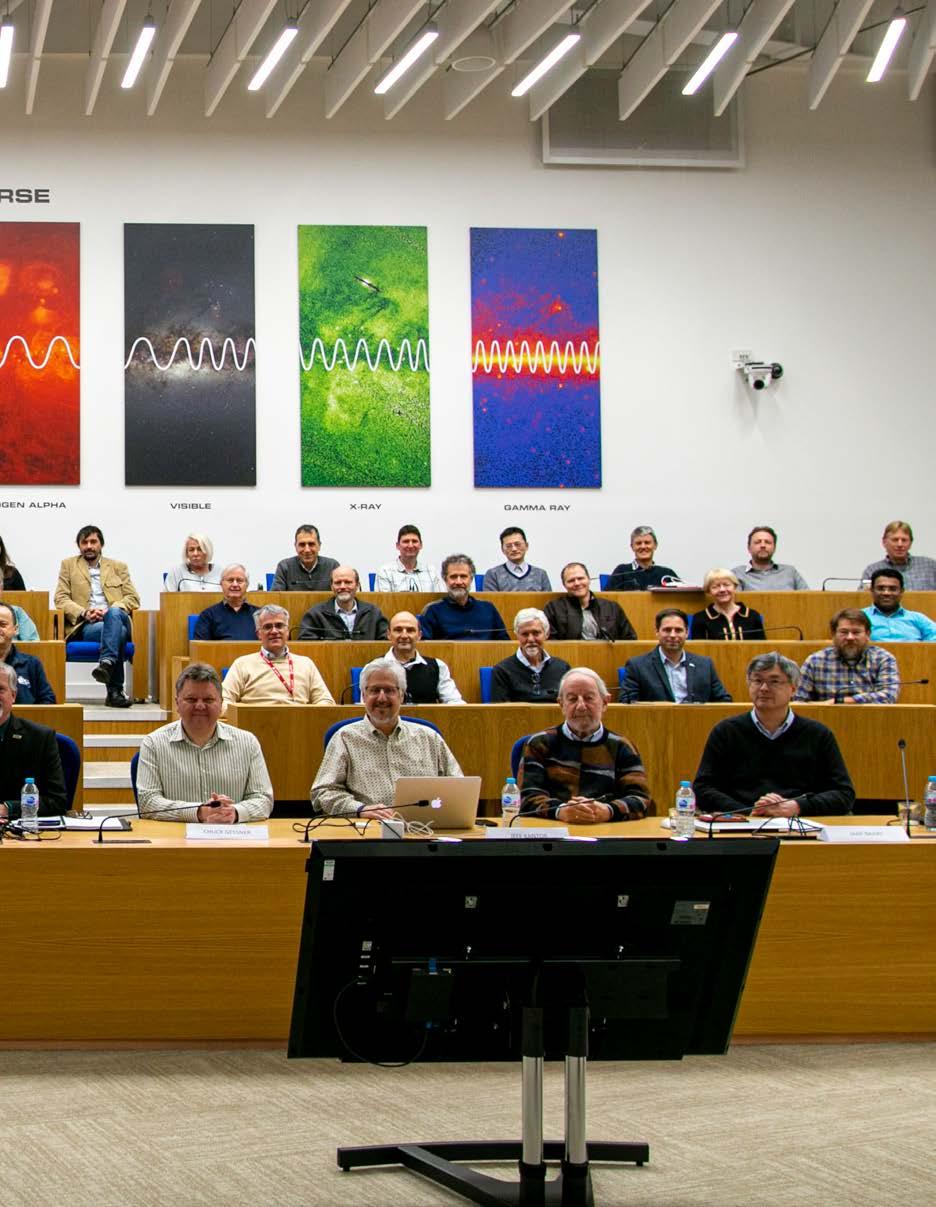
4 minute read
All systems go: SKA passes overall design review
from Contact 03
For some, December signals the wind-down towards the end of the year, but for SKA engineering teams, the last month of 2019 was the opposite as they geared up for a milestone six years in the making.
The System Critical Design Review (CDR), an overall assessment of the SKA design, costing and planning work, took place at SKA Global Headquarters from 9th-12th of December. The result was the best possible outcome: a pass from the independent panel of experts from major astronomical facilities including ESO, NRAO and Gemini Observatory.
“This is the biggest point in the project so far from an engineering point of view,” said SKA Project Engineer Luca Stringhetti at the time, who led the work. “It’s the equivalent of a go/no-go for launch. Now the project can really take off.”
Luca Stringhetti, SKA Project Engineer
The momentum towards System CDR had been building all year as more engineering design consortia passed their individual element reviews, and progress accelerated on the governance front with the signing of the SKA Observatory Convention.
Importantly, this was not only a design review, but also an analysis of the costing, scheduling, risk management and safety plans for the SKA.
“One objective was to give confidence that we are the right organisation with the right people in place to deliver something like the SKA,” said Luca, whose 20-plus years of experience includes four working on the European Space Agency’s Planck telescope Low Frequency instrument. “This outcome, coming from an independent panel of senior people from big projects and organisations, shows that we are, and that what we have done so far is right. That’s both rewarding for the entire team and very reassuring.” System CDR marked the culmination of six years of design work for SKA engineering teams.
While the meeting took place during one week in December, the work towards it began long before that. From the formation of the consortia in November 2013, through Preliminary Design Reviews in 2015-2016, to the past 12 months of intense preparation for System CDR, the work has been relentless for all involved.
SYSTEM CDR IN NUMBERS
-Panel of 10 experts from 7 organisations
-32 top-level documents
-85 supporting documents
-4,000 pages of documentation reviewed
-Over 600 people involved over 6 years from 20 countries
“We were as prepared as possible prior to the review, but even so it was a great relief to hear the outcome,” Luca said. “This success belongs to the whole community, not just those of us who were present for the CDR meeting. It’s like a relay race – maybe the last runner gets the glory, but it would be impossible without a whole team.”
That team represents more than 600 engineers and experts in 20 countries around the world.
The panel of 10 experts was chaired by ESO’s Director of Programmes Adrian Russell, who previously worked at the ALMA Observatory. Describing the SKA's progress over the past few years as "quite remarkable”, Adrian said: “It must feel inside the project that things have really come together in the last 12 months. Certainly looking from the outside it’s very, very impressive.”
As expected, the panel issued actions and recommendations which will be used to finalise documentation in order to develop the SKA Construction Proposal. Of course, the road ahead will include many challenges, it could hardly be otherwise in such an ambitious project.
“That’s one of the attractions for astronomers and engineers, working out how to overcome these challenges,” said Alison Peck of Gemini Observatory, a member of the review panel. “I think the SKA really has the right team in place to do that. There are a lot of experts on board and people are so eager to make the SKA the best telescope it can be.”
The panel announced its conclusions at the end of four long days, and six strenuous years. And then… everyone went back to work, ready for the next task, the next meeting, the next milestone to be reached, and in particular preparing the SKA Construction Proposal in 2020. For Luca, though, it’s important for people to recognise the magnitude of this moment.
“Sometimes people forget that we can achieve amazing things when we work together towards a common goal – especially as scientists and engineers, we are always finding problems because then we want to solve them!” he said. “But this was an important reminder to stop for a moment and look at what has been achieved – this result is something that will remain forever.”

System CDR marked the culmination of six years of design work for SKA engineering teams.
Credit: SKAO
By Cassandra Cavallaro (SKAO)










